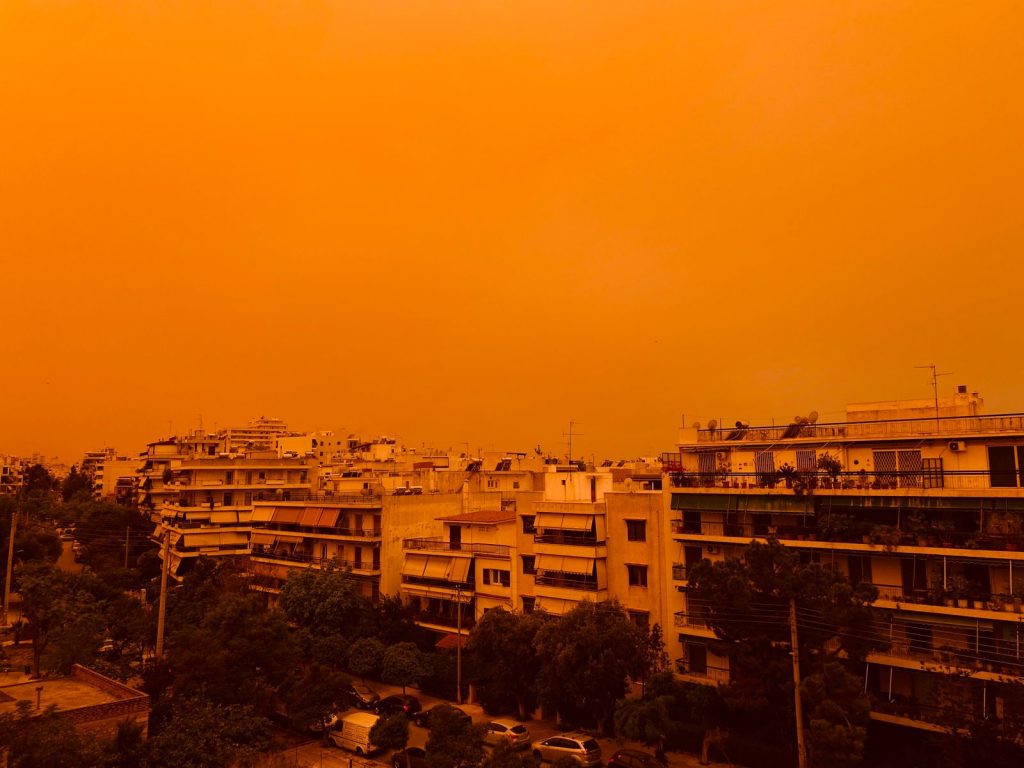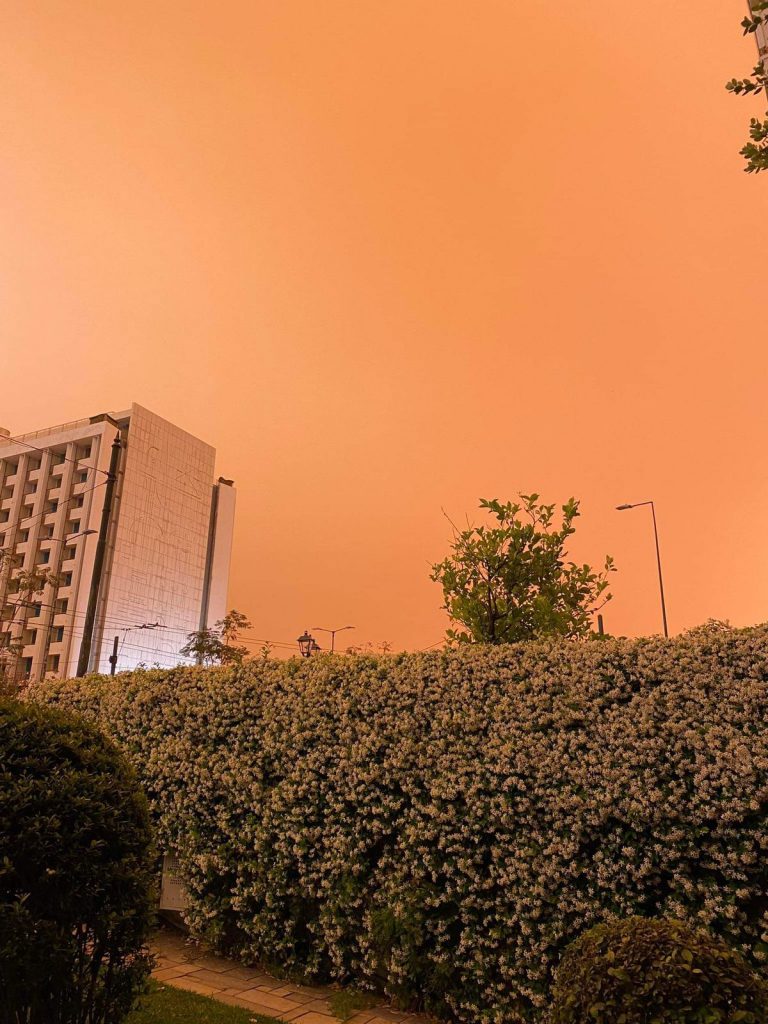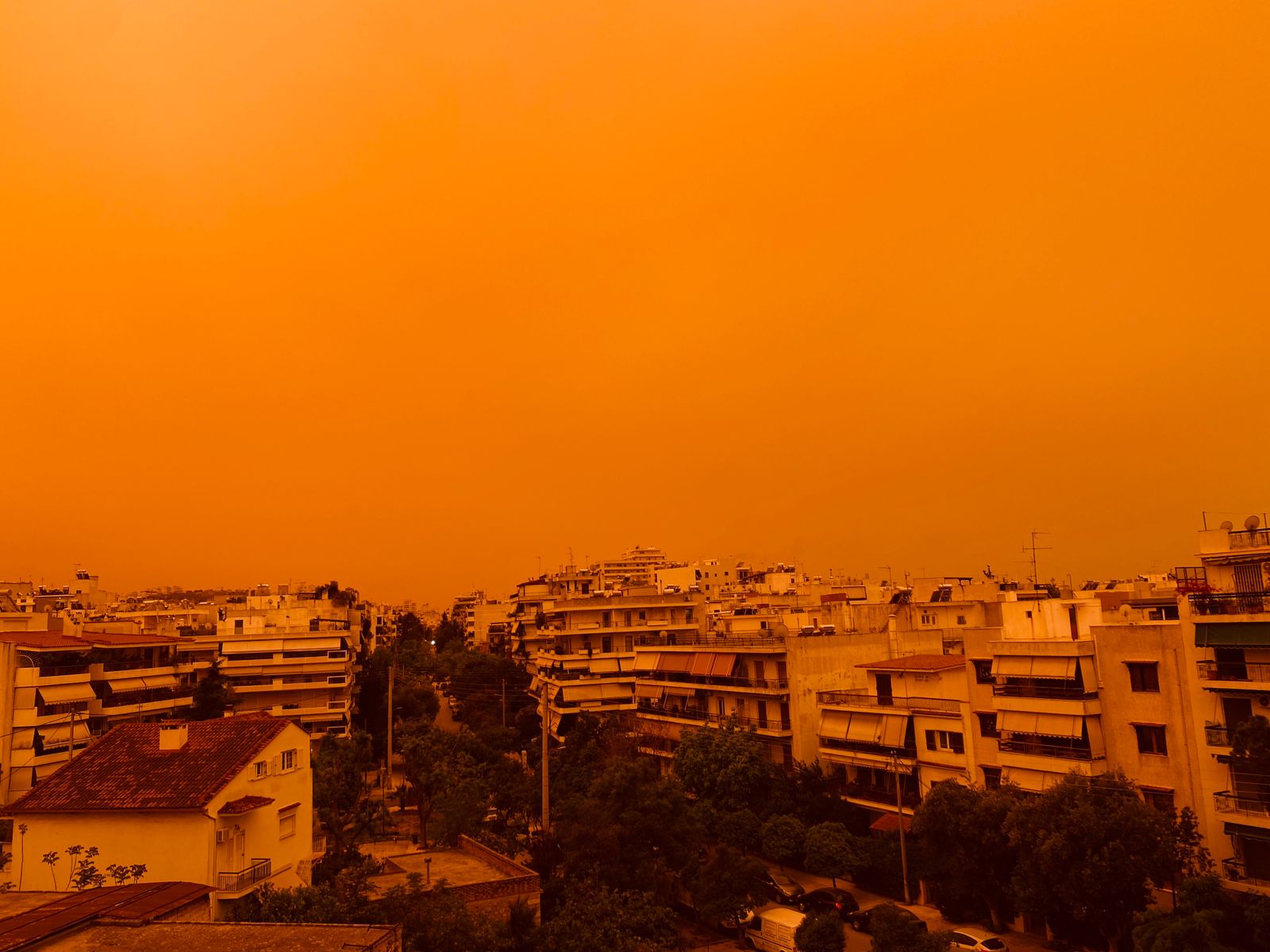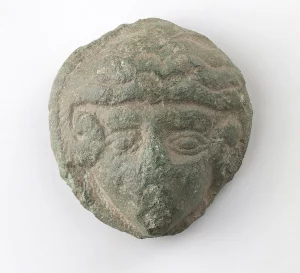An African dust cloud reminiscent of dystopian scenes from “Mad Max” and “Predator” which covered most of Greece on Tuesday and Wednesday prompting the health ministry to warn vulnerable groups to remain at home made international news this week.
Speaking to Greek public broadcaster ERT 1 earlier on Wednesday, meteorologist Panos Giannopoulos said similar dust storms hit Greece in 2005, 2006, and 2018. He went on to add that surface dust concentration was the key factor affecting health. On Tuesday evening, he said, surface dust concentration was highest at midnight exceeding significantly the safe limits set by the World Health Organization.

The orange-like cloud combined with the high temperatures for the season created a smog-like effect impacting air quality and reducing visibility. At least 15 people were hospitalized in Attica on Tuesday suffering from breathing difficulties.
The phenomenon, which hit Greece again a month ago and Europe two weeks ago, is caused by massive dust waves traveling via southerly winds from the Sahara Desert across the Mediterranean.
According to Giannopoulos, dust storms have been reported in the Mediterranean region since antiquity with Greek poet Homer (8th century BC) referring to incidents of “blood rain”.
Satellite data from NASA’s American Aqua satellite captured images of the African dust wave, known as “Minerva Red”, which affected the Eastern Mediterranean region and most of Greece.

Worst hit by the Sahara dust were Athens and most of Attica, Thessaloniki, Crete, and Kalamata with people across the country posting apocalyptic scenes on their social media accounts.
According to Giannopoulos, weather conditions are expected to clear up later tonight moving towards the Eastern Aegean with the help of westerly winds. He went on to add that he expects air quality bulletins to soon be included into regular weather broadcasts.



